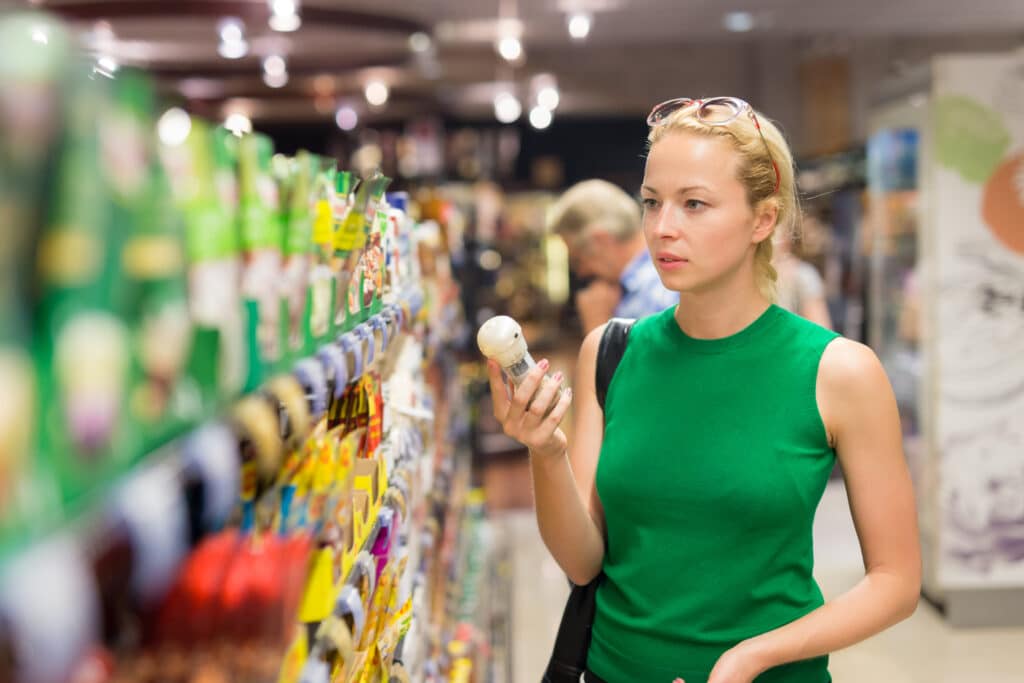
Impulse Buying Taps into the Emotional Needs of Consumers
It’s hard to pass up a good deal, especially when it appears out of nowhere. That’s probably why 89 percent of shoppers have given in to the temptation of impulse buying. Some people might treat themselves to a new bar-b-que tool after a rough week at work. At the same time, another person is seeking instant gratification from a candy bar or enjoys the rush that comes with getting 25 percent off on solar lights. Without a doubt, impulse buying is often emotional and driven by the feeling of missing out (FOMO).
Unplanned purchases are an opportunity for independent retailers to increase the amount shoppers spend during transactions and keep their inventories fresh and engaging. Impulse purchases are quick-turn items that typically have a higher profit margin than items sold in core departments. Placing impulse items at checkout or on a dedicated endcap increases their visibility and the likelihood that customers will make a quick purchase before heading home.
- Adults will spend more than $324,000 on impulse purchases during their lifetime.
- The average American spends $450 monthly ($5,400 annually) on impulse purchases.
- Americans make 156 impulse purchases a year, averaging 3 per week.
When it comes to selling impulse items, physical stores have an advantage since online shoppers like to plan their purchases in advance and prioritize price and value. Many of these items are new to the marketplace or updates on traditional favorites. Wholesale markets and trade shows are great places to review new products and learn about popular consumer trends. Be adventurous and stock products not typically found at big box stores or competitors.
Remember that impulse purchases are not based on customers’ pre-existing needs or because they came to your store to buy the product. Stern’s Classification of impulse buying identifies four types of impulse buying that drive consumer purchasing behavior.
Pure impulse Buying refers to purchases made based on immediate desires or emotions. It is the most basic and immediate type of impulse buying.
Example: Buying a candy bar at checkout because you want something sweet.
Reminder Impulse Buying happens when shoppers see an item that reminds them of a need they didn’t initially have.
Example: You go to the hardware store to buy lightbulbs, but see the paper towels and remember you are out of them and need to buy more.
Suggestive Impulse Buying occurs when the person is influenced by a suggestion or recommendation. Suggestive Impulse Buying is purchases that are not planned initially but are considered after seeing the product.
Example: Offering a special promotion on smoke alarms during fire safety month as a limited-time deal.
Planned Impulse Buying occurs when a shopper goes to the store with a specific item in mind but is looking for a deal or special promotion to persuade them to make the purchase. The trip is planned with the intent of paying less based on impulse savings related to the product.
Example: The person goes to the store for furnace filters in early fall, hoping the manufacturer will offer a special discount before the peak winter season.
Focusing on suggestive impulse buying enables retailers to highlight selected items and promotions and offer shopping experiences that motivate customers to satisfy their immediate desires and unmet needs. These seven tactics inspire ideas that can increase sales of impulse items.
- Create a Sense of Urgency with limited-time offers: Emphasize discounts and special promotions.
- Use Scarcity Messaging to let customers know they may miss out on a deal because the item is in short supply and will not be around long.
- Highlight products that stir emotions, such as those associated with outdoor enjoyment. Try promoting Sun hats, sunscreen, exotic plants, grilling tools, cooking sauces, and gardening shoes.
- Send personal recommendations to your customers by text or email. Use your POS data to identify customer preferences and select the ideal impulse items.
- Leverage Social Media to share testimonials and reviews and influence recommendations to highlight the item’s popularity and desirability.
- Accept multiple payment options to reduce checkout time and make it easy to purchase.
- Use Marketing to Create a sense of belonging. Create a community and share experiences.
Remember, selling impulse items can be a win-win for you and your customers. According to the National Hardware Show, the top six impulse items sold in hardware stores are gift items, holiday-themed merchandise, low-cost items, toys and children’s items, food and drink, and local products. Any of these categories has the potential to increase sales for your store.




